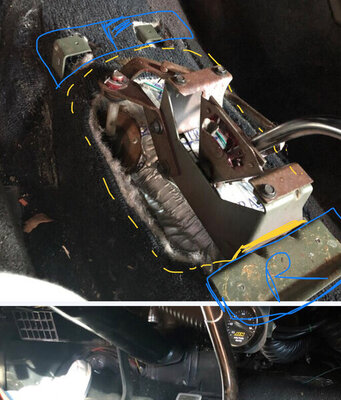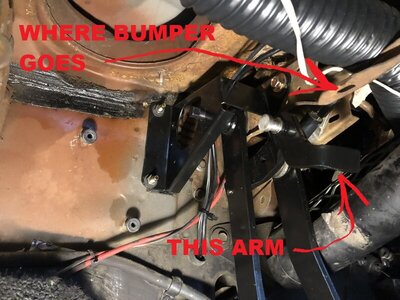I only had a couple of hours of free time today but I got a few things done.
In 2001 when I converted from a 318 to a 440, I bought an aluminum Griffin radiator from Summit. I was working out of town and free time was scarce. When it arrived, it was a model without a built in transmission cooler. I went ahead and kept the radiator and just used an add on external cooler. It has been in the car all this time and has worked fine.
This won't be needed here anymore....
I have this thing where I am trying to do what I can with the car on the ground before lifting it up to do the underside stuff. I figure that this cooler needed to come off, the rubber hoses too. I was going to remove the Kickdown cable but got distracted....Staying on task can be difficult sometimes.
Next up, clutch and brake pedals!
The instructions were great here. First, remove the fresh air vent. That is the black grille you see to the left of the brake pedal. This has to come out to have room to get the longer brake and clutch pedal PIN that they swing off of.
The vent is held in with three speed nuts, 3/8". Mine were clean and came off easy. The gasket was still nice too.
Sometime in 2014 or so when I was trying to get better braking performance, I took a spare brake pedal and drilled a hole above the stock one, effectively increasing the pedal ratio. It worked quite well. The brakes start to grab within an inch of travel.
These reproduction pedals are designed to fit like a stock pedal. I am preparing myself for a slight reduction of braking performance.
It looks a bit rough but after I drilled the hole, I welded a washer over it and spritzed it with some cheap paint.
The pivot distance with the old pedal:


















